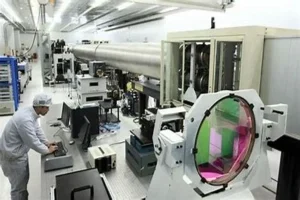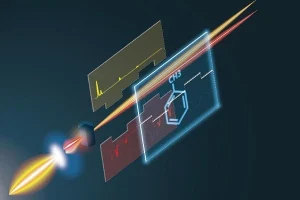In the realm of laser technology, the type of crystal utilized can have a profound impact on the performance, efficiency, and applications of the laser system. Two of the prominent crystals that have garnered attention in this domain are Chromium-doped Gadolinium Scandium Gallium Garnet (Cr:GSGG) and Chromium-doped Yttrium Aluminum Garnet (Cr:YAG). This detailed comparison sheds light on their absorption and emission properties, laser performance, and potential applications.
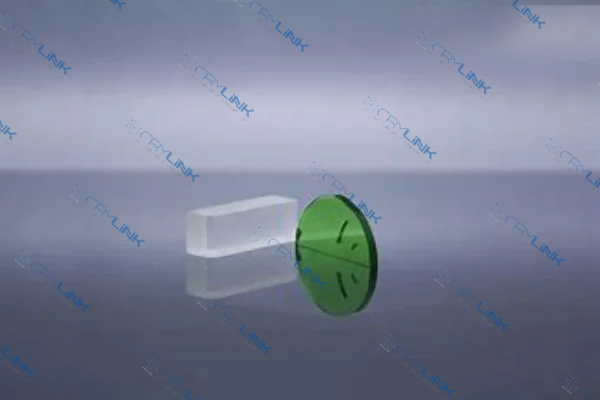
Absorption and Emission Properties
Cr:GSGG, with its noted broad absorption bands, caters to a spectrum of laser technologies, becoming a mainstay in diverse applications. The absorption peak around the 808 nm wavelength is not just a random characteristic; it’s a definitive factor that ensures its efficacy when paired with diode lasers. Such compatibility guarantees efficient pumping, ensuring that lasers function optimally and are powered with precision. When it comes to emission, the comprehensive range between 700 to 900 nm exhibited by Cr:GSGG isn’t merely about numbers. This wide spectrum is crucial in delivering short pulses, especially in mode-locked lasers, providing a blend of power and finesse that only a few materials can offer.
Moving on to Cr:YAG, its absorption qualities take the limelight at the 940 nm wavelength. This isn’t just a mere property; it’s an embodiment of its adaptability. By aligning perfectly with diode laser pumping requirements, it ensures that laser systems are not just operational but optimized for peak performance. But absorption isn’t the only domain where Cr:YAG stands tall.
When we delve into emission, we witness a comparatively narrower fluorescence spectrum than Cr:GSGG. Centering around the 1350 nm region, this isn’t a shortcoming but rather a specialized feature. This distinct peak becomes a cornerstone for lasers that need stable continuous wave operations. Instead of spreading its emission across a wide range, Cr:YAG focuses its energies, ensuring stability and consistency.
Diving deeper into the intricacies, the absorption and emission properties of these crystals are not just about wavelengths and spectra. They embody the very essence of laser technologies, defining their capabilities and potential applications. For instance, while Cr:GSGG offers flexibility with its broad spectrum, making it suitable for a range of applications from medical to industrial, Cr:YAG ensures precision and stability, becoming indispensable in applications that demand unwavering consistency.
In the world of laser technologies, where every nanometer counts, these crystals, with their distinct properties, ensure that we’re always on the cutting edge, pushing the boundaries of what’s possible. Whether it’s the broad-spectrum adaptability of Cr:GSGG or the focused stability of Cr:YAG, both have a pivotal role in shaping the future of lasers.
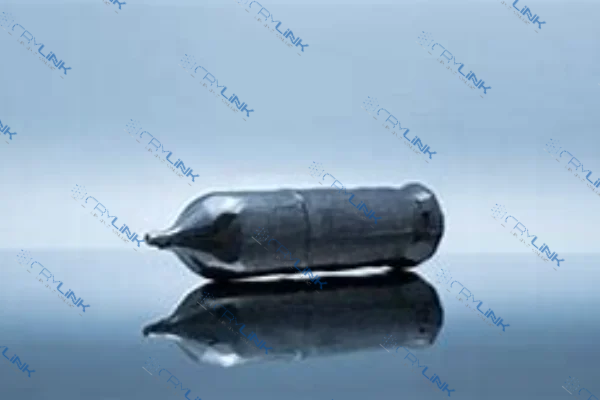
Laser Performance
The field of laser technology is as varied and nuanced as the applications it serves. The sheer diversity of demands has necessitated the development of materials that can cater to these specific requirements. Enter Cr:GSGG and Cr:YAG, two standout materials in the realm of laser crystals, each bringing a unique set of capabilities to the table.
Cr:GSGG, with its ability to generate ultrashort pulses, especially in the femtosecond range, has opened up new frontiers in laser applications. These aren’t just short bursts; they are phenomenally rapid, making them suitable for applications where precision is paramount. This capability primarily stems from its broad emission bandwidth. Imagine the power and flexibility this offers. It’s akin to having a sports car that can not only reach top speeds but can do so across a variety of terrains. This crystal doesn’t just stop at delivering power. It backs it up with durability. With a high damage threshold, Cr:GSGG ensures that even under the most intense laser operations, the system remains robust and resilient, minimizing the risk of damages or downtimes.
On the other hand, Cr:YAG is the epitome of reliability in the laser world. Its mastery lies in its capability to produce consistent and stable continuous wave (CW) laser operations. While many materials might offer stability, few can match the level of unwavering reliability that Cr:YAG brings. This consistency stems from its narrow emission bandwidth.
Instead of spreading its energy across a broad spectrum, Cr:YAG channels it, ensuring that the laser remains steady and predictable. But that’s not the end of its list of merits. Thermal durability is another feather in its cap. Lasers often operate under conditions where temperatures can soar. Under such conditions, many materials might falter or show inconsistencies in performance. Not Cr:YAG. It remains unfazed, maintaining its performance levels even when the heat is turned up.
In summation, while both crystals serve the world of lasers, they cater to different spectrums of requirements. Cr:GSGG is for those moments when power, speed, and flexibility are of the essence. Cr:YAG, on the other hand, is the bedrock of reliability, ensuring that laser systems deliver consistent performance, come what may. The choice between the two isn’t about superiority but rather about suitability. Each crystal, with its unique set of properties, ensures that the ever-evolving world of lasers continues to shine bright.
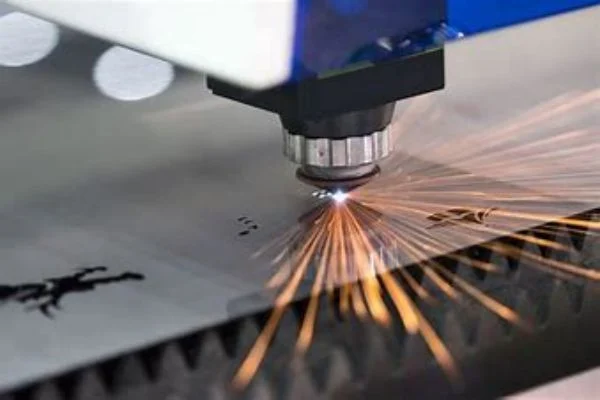
Applications in Laser Systems
The diverse capabilities of Cr:GSGG and Cr:YAG crystals ensure they’re not confined to theoretical discussions or laboratory research but have tangible impacts across various industries. Their distinct properties determine where they’re best employed, and the applications are as vast as they are impressive.
Cr:GSGG, with its unparalleled ability for ultrashort pulse generation, has carved a unique space for itself in multiple sectors. Consider ultrafast spectroscopy, a realm where rapid and precise light emissions are essential to capture high-speed events. Cr:GSGG becomes an invaluable asset here, allowing scientists to study molecular dynamics in real-time and uncover phenomena previously invisible to the human eye. Similarly, in time-resolved studies, where every femtosecond can make a difference, this crystal’s broad emission bandwidth comes to the fore, offering unparalleled clarity and precision.
The industrial sector, too, has felt the impact of Cr:GSGG, especially in precision micromachining. Here, the need for swift, accurate cuts on minute scales is paramount. Whether it’s intricate designs on metals or delicate operations on semiconductors, this crystal ensures precision is maintained without sacrificing speed. The medical world benefits too. In biomedical imaging, where clarity can be the difference between accurate and misdiagnosis, the ultrashort pulses of Cr:GSGG-based lasers provide unparalleled image resolution, aiding medical professionals in their crucial work.
Cr:YAG, on the other hand, stands as a testament to stability and durability in the laser world. Its prowess is evident in industrial cutting and welding. Think of mammoth machines slicing through thick sheets of metal or fusing parts together; the consistent and powerful beam from Cr:YAG-based lasers ensures these tasks are done with precision and efficiency. In medical surgeries, the reliability of Cr:YAG is life-saving. Surgeons need equipment they can trust implicitly, and lasers equipped with this crystal offer just that, ensuring procedures are carried out smoothly, minimizing risks to patients.
Beyond these, Cr:YAG’s precision finds utility in rangefinding and remote sensing. Whether it’s military applications or geographical surveys, the crystal’s stability ensures accurate distance measurements and clear imaging from afar. The telecommunications industry, the backbone of our connected world, also leans on Cr:YAG. Here, its consistent beams facilitate high-speed data transfer across fiber-optic cables, making real-time global communication a reality.
In essence, these crystals aren’t just contributors but pivotal players in technological advancements across sectors. From medical breakthroughs to industrial innovations, the roles of Cr:GSGG and Cr:YAG are ever-evolving, signaling an exciting future for laser systems and their applications.

Which Crystal for Which Laser System?
Choosing between Cr:GSGG and Cr:YAG is akin to selecting the right tool for a job, with the decision being heavily influenced by the specific needs of the laser system. If a system’s primary demand is short pulse durations, where rapid and precise bursts of energy are essential, Cr:GSGG stands out with its broad emission bandwidth, catering perfectly to such requirements.
On the flip side, when the environment presents challenges such as high temperatures and the laser system necessitates unwavering stability and robust durability, Cr:YAG becomes the crystal of choice, ensuring consistent performance even under the most demanding conditions. In essence, the choice isn’t about one being superior to the other but about aligning the crystal’s unique properties with the laser system’s distinct requirements.
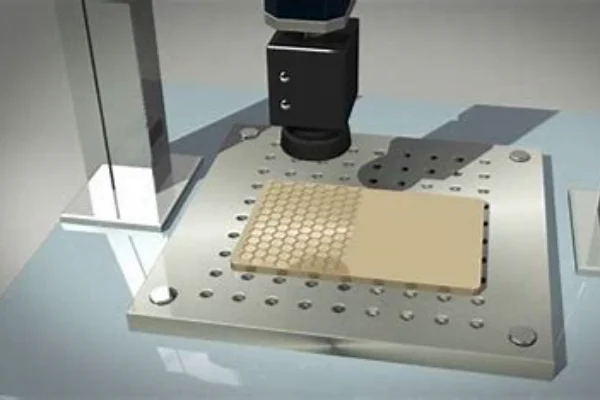
The Future of Cr:GSGG and Cr:YAG
Both Cr:GSGG and Cr:YAG continue to be subjects of extensive research. As technology progresses, enhancements in doping concentrations, crystal growth techniques, and thermal management are anticipated, further widening their applicability in cutting-edge laser systems.
Conclusion
The intricacies of Cr:GSGG and Cr:YAG stretch far beyond their mere chemical compositions. Their distinct absorption and emission properties, laser performance metrics, and areas of application set them apart. While Cr:GSGG excels in short-pulse generation applications, Cr:YAG shines in stable CW operations. The selection between the two is contingent upon the laser system’s specific demands, ensuring that the most suitable crystal is harnessed for optimal performance.
FAQs
- 1. What is the primary absorption peak for Cr:GSGG?
- The primary absorption peak for Cr:GSGG lies around the 808 nm wavelength.
- 2. In which application is Cr:YAG’s thermal durability especially beneficial?
- Cr:YAG’s thermal durability is especially beneficial in industrial cutting and welding.
- 3. Which crystal is more suitable for ultrafast spectroscopy?
- Cr:GSGG is more suitable for ultrafast spectroscopy due to its ability to generate ultrashort pulses.
- 4. What contributes to Cr:YAG’s stable continuous wave laser operations?
- Cr:YAG’s narrow emission bandwidth is instrumental in achieving stable continuous wave laser operations.
- 5. Are there ongoing researches related to these crystals?
- Yes, both Cr:GSGG and Cr:YAG continue to be subjects of extensive research, aiming at refining their properties for advanced laser applications


